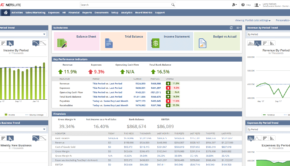Who Uses Application Performance Monitoring?
Application performance monitoring (APM) is one of the most basic and important tools that an organization can have in its information technology (IT) arsenal. These days, organizations are doing all sorts of things to improve the services and products that they are delivering to their users, including migrating to the cloud, utilizing microservices, and so on. This makes the technology landscape rather complex, requiring such businesses to more closely manage how the applications that are critical to their business perform.
Previously, an organization could look at the utilization of resources, such as the disk, memory, and central processing unit (CPU), and that was enough. This is no longer true. Another method that used to work but doesn’t work anymore is the analysis of various tiers of the application. Modern applications use many different tiers, comprising both software and hardware, to operate.

This is where APM tools come in, where they cut across the boundaries between tiers and provides an end-to-end view of the application’s performance. APM software tells you about the experience of the end-user, but it also goes farther than that, where it allows IT teams to diagnose the causes of issues in the performance of the application.
That said, a good way to understand the importance of APM is to see who uses it and what for. Here are some professionals who could benefit from APM solutions:
The Application Manager
The application manager is in charge of ensuring the application helps the business to achieve its outcomes. In this case, the greatest outcome is higher revenue for the business. Application managers are interested in making the application highly available to users, making sure it is performing as expected, and that the user experience is satisfactory. They also want to know how customer demand is trending to plan for the expansion of the application.
An APM solution can be useful to such professionals in a variety of ways. For starters, an APM provides them with a central location from which to view the performance metrics of the application and gain insights into that performance. They can also use it to track the digital experience of the users of the application. They can also use it to gain a deeper understanding of the customer journey through the application, which can, in turn, show them what to optimize to increase application usage and revenue.
The Application Architect

The application architect is mainly responsible for getting together the platforms and technologies used in the application. Like the application manager, they are also concerned with ensuring that the end-user has a great experience with the application and that it ultimately meets the goals of the business. They make sure that the application is well prepared for future requirements by making sure it is keeping up with technology trends.
An APM can help an application architect to analyze and understand the various bottlenecks to the performance of their application. They can also analyze the reports generated by the APM to determine how to optimize the performance and usage of the application.
The Application Developer
The application developer is there to ensure that the application is performing according to the needs of the user. They are responsible for detecting defects in the code of the application and fixing them. They are also concerned with ensuring that the application experiences as little downtime as possible.
For these professionals, APM tools can help them detect issues in the code of the application that they can solve. The APM can help them narrow down the exact areas of code that they should focus on when looking for issues.
Sine modern application heavily depend on remote services from third parties; an APM can help the application developer to quickly determine if performance issues in the application are being caused by issues with third-party remote services. The APM can help the application developer determine whether the problem is with the application code or something else, saving them time in the process.
The Database Administrator

The database administrator (DBA) is responsible for the tuning and maintenance of the databases used by the application. They regularly troubleshoot issues with the databases and face quite a number of challenges, including application queries that have been poorly designed inefficient database schemas, and so on.
An APM can help the DBA to determine if the performance of the application is being affected by the performance of the database or something else. The APM can also help them to in bottlenecks to database performance issues, as well the queries that consume the most time, allowing them to optimize the database for better performance.
The IT Administrator
The IT administrator and his or her team are responsible for managing and maintaining the upkeep of the application and its infrastructure from end to end. They should troubleshoot any issues with the application and quickly get the right domain expert involved to solve the problem to keep the application up at all times.
An APM can help an IT administrator by making the troubleshooting process both faster and more proactive. Machine learning capabilities in the best APM tools can even help them reduce cases of false alarms and increase their accuracy in getting at the root causes of performance issues.
















